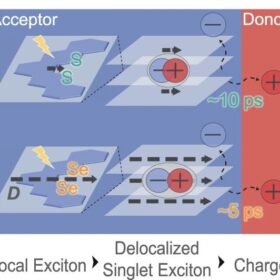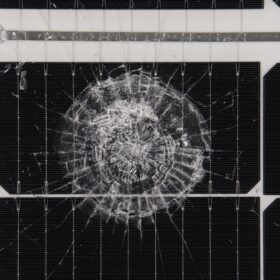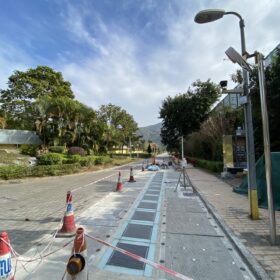Scientists say concavities in perovskite films may improve solar cell stability
Hong Kong University of Science and Technology (HKUST) researchers have gained insights into perovskite microstructure. After removing grain surface concavities in the crystalline grains of perovskite, they fabricated a solar cell with improved efficiency retention under standardized thermal cycling, damp heat, and maximum-power-point tracking tests.
Semi-transparent PV window based on passive radiative cooling coating
Scientists have manufactured and analyzed a novel coating for semi-transparent photovoltaic glazing that reportedly offers remarkable energy yield and a low heat gain rate. Through outdoor experiments, the researchers also found the glazing also provides satisfactory high-quality indoor lighting conditions.
Non-fullerene organic solar cell with selenium acceptor achieves 19% efficiency
Researchers in China have designed an organic solar cell the uses an acceptor based on selenium as an alternative to commonly utilized non-fullerene acceptors. The new acceptor enabled the cell to have reduced non-radiative recombination loss and improved dielectric constant.
Beny launches PV-ready EV charging station
Beny New Energy says its new charger can deliver power at a range of 360 kW—600 kW. It supports various connection standards.
Hong Kong researchers develop inverted perovskite solar cell with 25.6% efficiency
The research team said the cell also achieved remarkable thermal stability, as it was able to retain 90% of its original efficiency for over 1,000 h. The device uses a self-assembled monolayer to stabilize the interface between the perovskite absorber and the hole transport layer.
Hail-prone areas may require solar modules with 4 mm-thick front glass
New research from India claims solar modules with 3.2 mm-thick front glass may not be strong enough to withstand storms producing big hailstones. The scientists found that a front glass of at least 4 mm should be used to avoid significant damage.
Pre-fabricated photovoltaic pavement for urban environments
China-based researchers have developed a model for photovoltaic pavement, achieving a potential electrical output of 0.68 kWh/m2 and an efficiency of 14.71%. Through simulations across 255 Chinese cities, they have determined that electricity potential ranges from 0.70 kWh/W to 1.83 kWh/W.
Inverted perovskite solar cell achieves 24.8% efficiency via new additive
The additive consists of a molecule known as 4-guanidinobenzoic acid hydrochloride (GBAC), which is a raw material and intermediate commonly utilized in organic synthesis, pharmaceuticals, agrochemicals and dyestuff fields. The solar cell has a p–i–n structure and, thanks to the new additive, showed considerably reduced defect density on the perovskite film, which in turn results in reduced non-radiative recombinations.
Agrivoltaics for grape farms
Researchers in Hong Kong have designed an agrivoltaic system that uses blockchain tech and smart contracts to reduce uncertainties between PV system operators and grape farmers. The proposed system uses rainwater to clean solar panels and provide irrigation.
Floating PV system mysteriously washes up on Hong Kong beach
A local environmental organization has published pictures of the stranded array which appeared last week on two beaches. Hong Kong’s Agriculture, Fisheries and Conservation Department is currently investigating where the installation came from.










